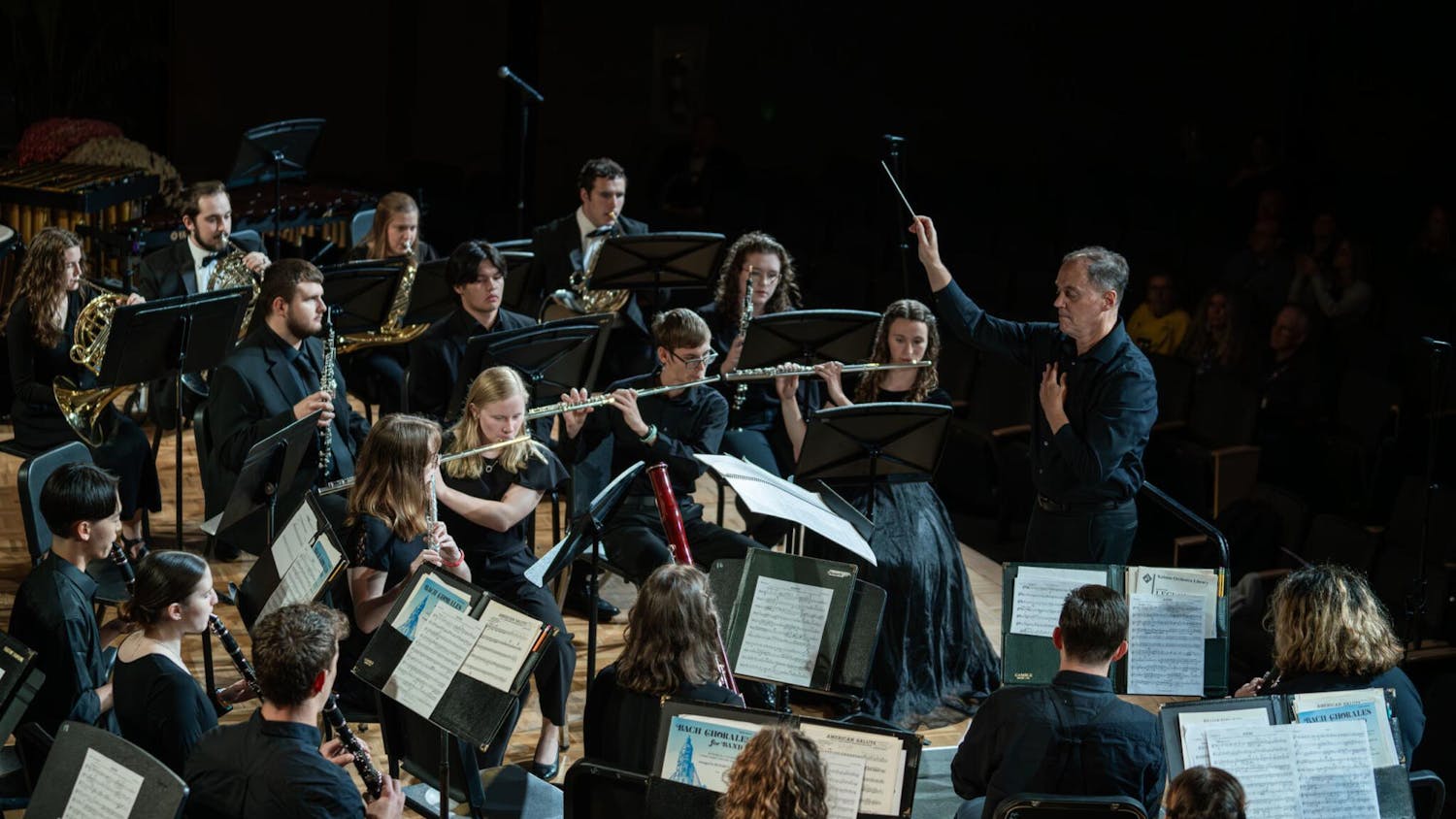Members of the Asian Students’ Intercultural Association (ASIA) rushed to and from the Boren Patio with platters and crockpots of simmering meat, sugar-coated fruit and boba tea, setting up for the night ahead of them.
Asian Street Market, hosted by ASIA, took place from 6–9 p.m. outside of the LaRita Boren Campus Center. As the air thickened with the smell of spices, people began to line Boren Patio with plates and food tickets in hand.
ASIA’s goal for this year’s event was to extend the amount of food offered and add more cultures to increase the diversity of the event, Stephany Lee, a sophomore marketing major and co-president of ASIA, said. She was grateful for the large number of international students who willingly cooked food dishes from their respective cultures.
“For me, just the fact that (students) were able to try the food that they would never be able to have, in the middle of the cornfields—I think that means a lot for me to give them the chance to have that experience,” Lee said.
The market saw 16 vendors cooking traditional street food from Korea, Japan, China, Thailand, India, Pakistan and the Philippines, Elijah Choi, a senior double-majoring in psychology and business management and ASIA member, said.
The layout was slightly changed this year to accommodate for the increase of six more vendors, he said. While food tables were located near the patio, outdoor seating on the grass and surrounding music provided an ambient atmosphere.
Choi’s own staple, fried rice, was featured along with his other dishes. During the event, he tossed rice, spices and other ingredients in a pan to cook before loading the steaming product on the next empty plate.
Alongside that were his other two dishes: Tteokbokki, featuring rice cakes covered in a sweet and spicy sauce that simmered in a pot, and Bungeoppang, a fried, light pastry in the shape of a fish that was filled with either sweet cream or red bean paste.
Oftentimes, international students who come from Asia don’t realize how big a part of their lifestyle street food is, Choi said. That is, until they no longer have the ability to walk down their own ambient hometown alleys in the evenings to buy hot foods from vendors.
“It's really trying to encapsulate a part of Asian culture that is not always highlighted in a lot of things—maybe it makes for a good backdrop in a movie or something like that, but it's never necessarily the focus,” Choi said. “But it's something that's so integral in Asian culture.”
One table situated a little farther from the others held sweet treats that were traded for hundreds of food tickets throughout the event.
Abi Chen, a junior double-majoring in psychology and orphans and vulnerable children, made a Chinese candied fruit snack known as Tanghulu.
Chen and her friends began the cooking process in the late morning, boiling sugar until it was caramelized before dipping speared fruit kabobs into the mixture. When bitten into, the glassy pieces melted with a soft crunch, revealing the soft and fresh flavor of fruit.
Halfway through the night, Chen had sold approximately 250 to 300 pieces of Tanghulu. She noted that the most meaningful part of the experience was seeing how everyone had appreciated her food.
For some, the event was as bitter as it was sweet.
Enoch Eicher, a senior multimedia journalism major and presidential fellow, said that it was incredible seeing how God has continued to use the event that he started and led as the former co-president of ASIA during his sophomore year. He added that it was special seeing the cabinet president’s lead others this year.
“I am just so proud of them,” he said. “It's a very large event, so I'm just glad that they were able to lead well and execute well.”
Eicher cooked two Indian slider dishes for the event. His Pav Bhaji featured a buttered bun filled with spicy mashed potatoes, cauliflower, bell peppers and tomatoes. A slice of lemon was laid next to the dish for a zesty garnish.
Eicher made the Vada Pav by combining mashed potatoes, turmeric and curry leaves into balls and then deep-frying them in a chickpea batter. After putting the veggie burger in a “cut pav” (bun), he added tamarind-date, cilantro-mint and garlic-coconut chutneys on top of the slider.
For 15 years of his life, Eicher grew up in Mumbai, where Pav Bhaji and Vada Pav were a regular part of his diet. These dishes incorporated potatoes and bread, which have been important staples of an Indian street food meal, he said.
Choi said that Asian Street Market can boast a certain personal connection that Asian restaurants don’t usually have because the food is made in another room where the cooking process is out of sight.
“You get to watch it, and then it gets handed to you right off of the griddle, or right off the stove, (or) right out of the pot,” he said. “That becomes like a vendor-consumer connection—a personal connection.”





